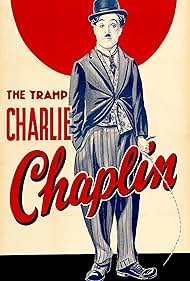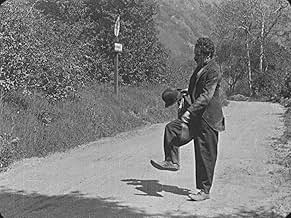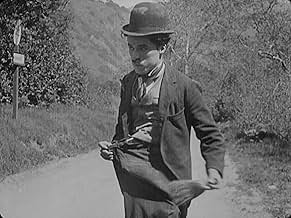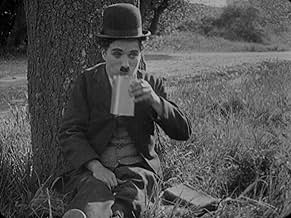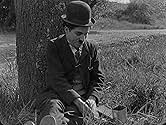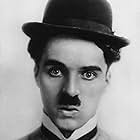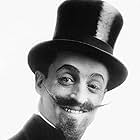IMDb RATING
6.9/10
3.8K
YOUR RATING
The Little Fellow finds the girl of his dreams and work on a family farm.The Little Fellow finds the girl of his dreams and work on a family farm.The Little Fellow finds the girl of his dreams and work on a family farm.
Billy Armstrong
- Minister
- (uncredited)
Lloyd Bacon
- Second Thief
- (uncredited)
- …
Bud Jamison
- Third Thief
- (uncredited)
Paddy McGuire
- Farmhand
- (uncredited)
Edna Purviance
- Farmer's Daughter
- (uncredited)
Ernest Van Pelt
- Farmer
- (uncredited)
Leo White
- First Thief
- (uncredited)
- Director
- Writer
- All cast & crew
- Production, box office & more at IMDbPro
Storyline
Did you know
- TriviaThe film was restored in 2014 through the Chaplin Essanay Project thanks to the financial support of The David Shepard.
- GoofsNear the end of the movie, the note that "The Tramp" writes is shown twice. The two notes shown are in completely different handwriting and the word "good bye" is spelled differently.
- ConnectionsEdited into The Essanay-Chaplin Revue of 1916 (1916)
Featured review
Of course, Chaplin's early career is over-flowing with famous short comedies, but The Tramp is probably one of the most well-known of the early two-reelers, especially since it is one of the most direct studies of the famous character after whom the film is named. A lot of the Keystone and Essanay films have dated pretty badly, and The Tramp is no exception. Many people may find a lot of the plot confusing or pointless, just random slapstick comedy, although I have a feeling that some of it was not meant to be much more than that.
It starts out with the tramp wandering down a dusty road, soon knocked over by the gusts of wind created by two speeding cars, only to pick himself up and dusts his wildly over-sized pants off with the handy little brush that he carries with him, apparently for just such an occasion. There are some clever an amusing sight gags involving things like a pitchfork and huge bags of flour and lot of mallets to the head, but not much in the slapstick department that is entirely memorable.
What the film is more famous for is certain elements of the tramp's personality that we learn here, such as his efforts to be proper and presentable despite being broke and wearing pants big enough for two or three of him, along with a jacket that's too small. We also see him protecting a young woman from the bullies of several oafish men, each of whom could easily have brained the little fellow (as Chaplin later lovingly called him), except that he is too smart for them.
The film is most memorable for the closing shot, however. Things don't go as planned, we are not given a happily ever after ending, and the movie closes with the tramp again wandering alone down a dusty road, at first seemingly depressed, until after a second or two, he perks up and all but dances down the road. He didn't get what he wanted and he's still poor and lonely, but he faces his life with a smile and seems like he's off to make the best of it. In a lot of ways, that sums up one of the recurring themes that Chaplin espoused throughout his lengthy career.
Smile.
It starts out with the tramp wandering down a dusty road, soon knocked over by the gusts of wind created by two speeding cars, only to pick himself up and dusts his wildly over-sized pants off with the handy little brush that he carries with him, apparently for just such an occasion. There are some clever an amusing sight gags involving things like a pitchfork and huge bags of flour and lot of mallets to the head, but not much in the slapstick department that is entirely memorable.
What the film is more famous for is certain elements of the tramp's personality that we learn here, such as his efforts to be proper and presentable despite being broke and wearing pants big enough for two or three of him, along with a jacket that's too small. We also see him protecting a young woman from the bullies of several oafish men, each of whom could easily have brained the little fellow (as Chaplin later lovingly called him), except that he is too smart for them.
The film is most memorable for the closing shot, however. Things don't go as planned, we are not given a happily ever after ending, and the movie closes with the tramp again wandering alone down a dusty road, at first seemingly depressed, until after a second or two, he perks up and all but dances down the road. He didn't get what he wanted and he's still poor and lonely, but he faces his life with a smile and seems like he's off to make the best of it. In a lot of ways, that sums up one of the recurring themes that Chaplin espoused throughout his lengthy career.
Smile.
- Anonymous_Maxine
- Apr 19, 2008
- Permalink
Details
- Release date
- Country of origin
- Official sites
- Languages
- Also known as
- Charlie on the Farm
- Filming locations
- Production company
- See more company credits at IMDbPro
- Runtime26 minutes
- Color
- Sound mix
- Aspect ratio
- 1.33 : 1
Contribute to this page
Suggest an edit or add missing content

